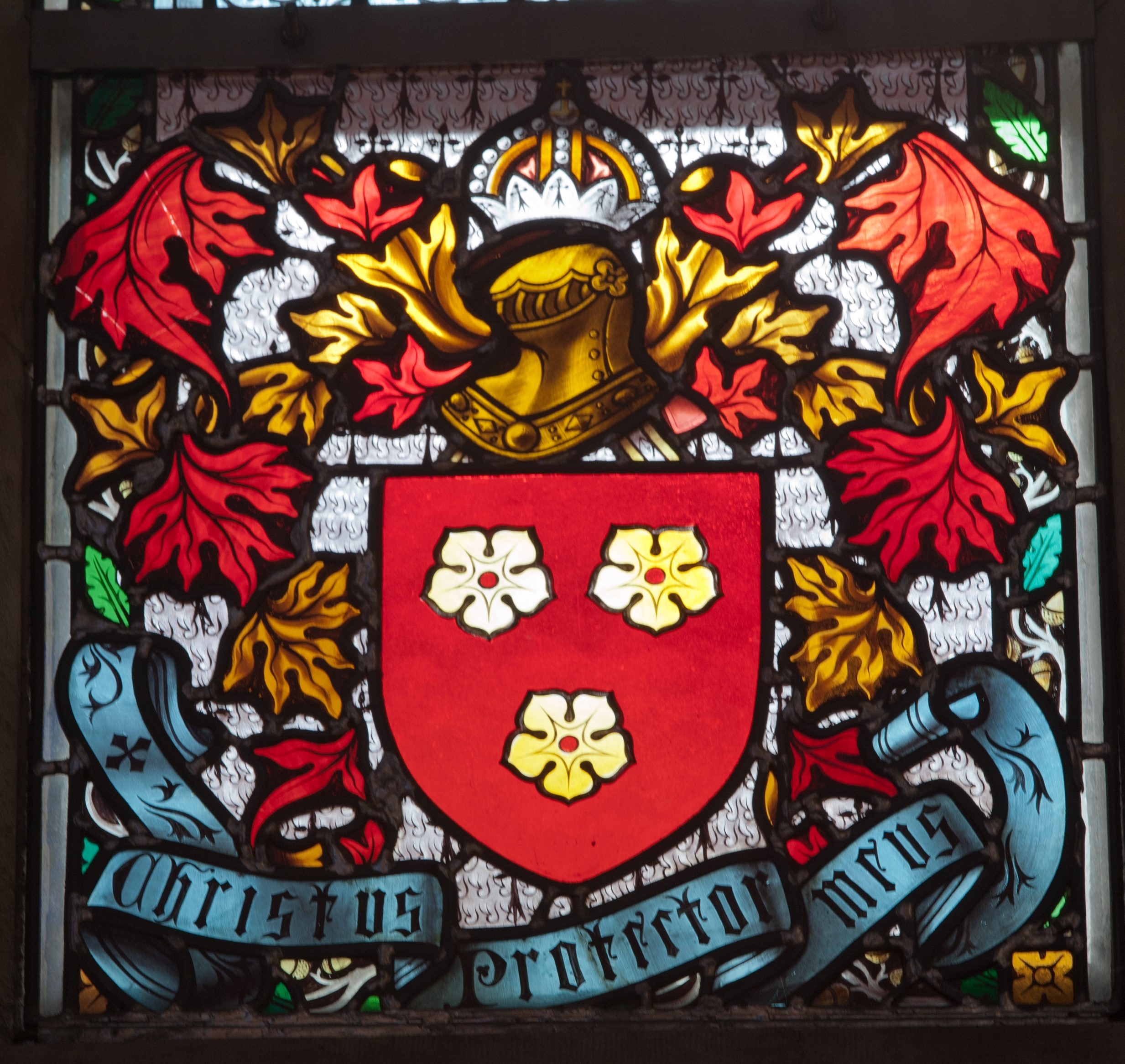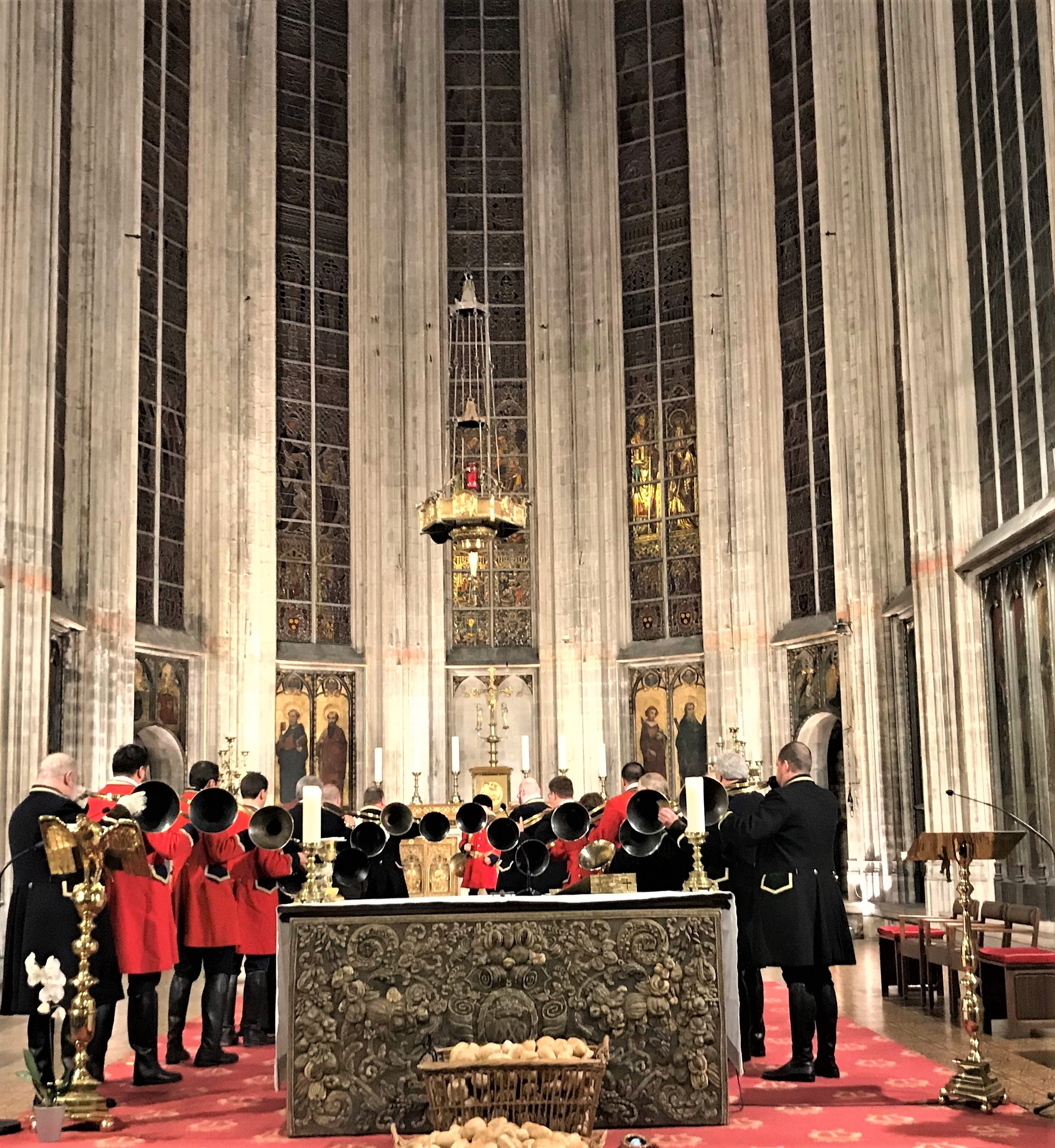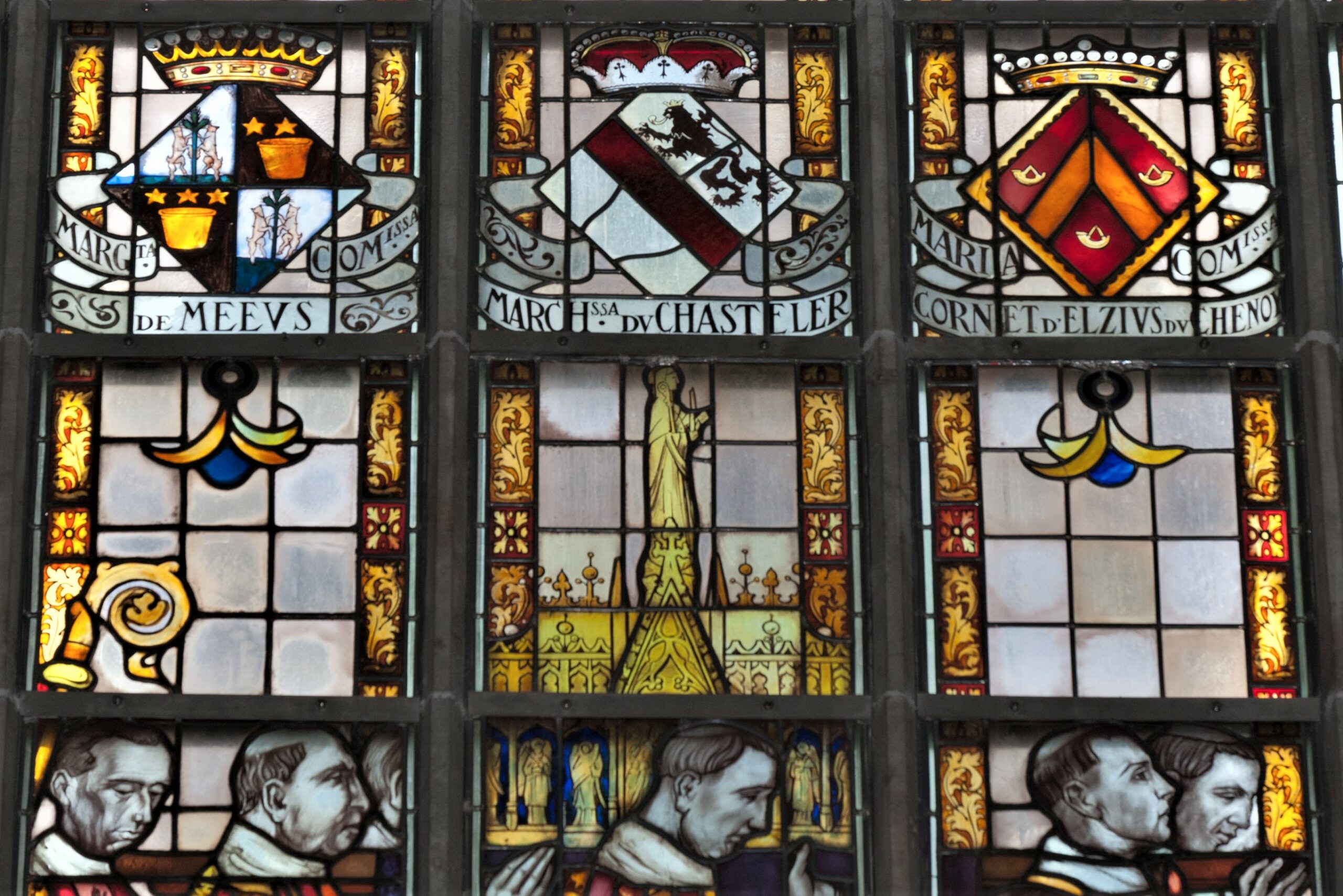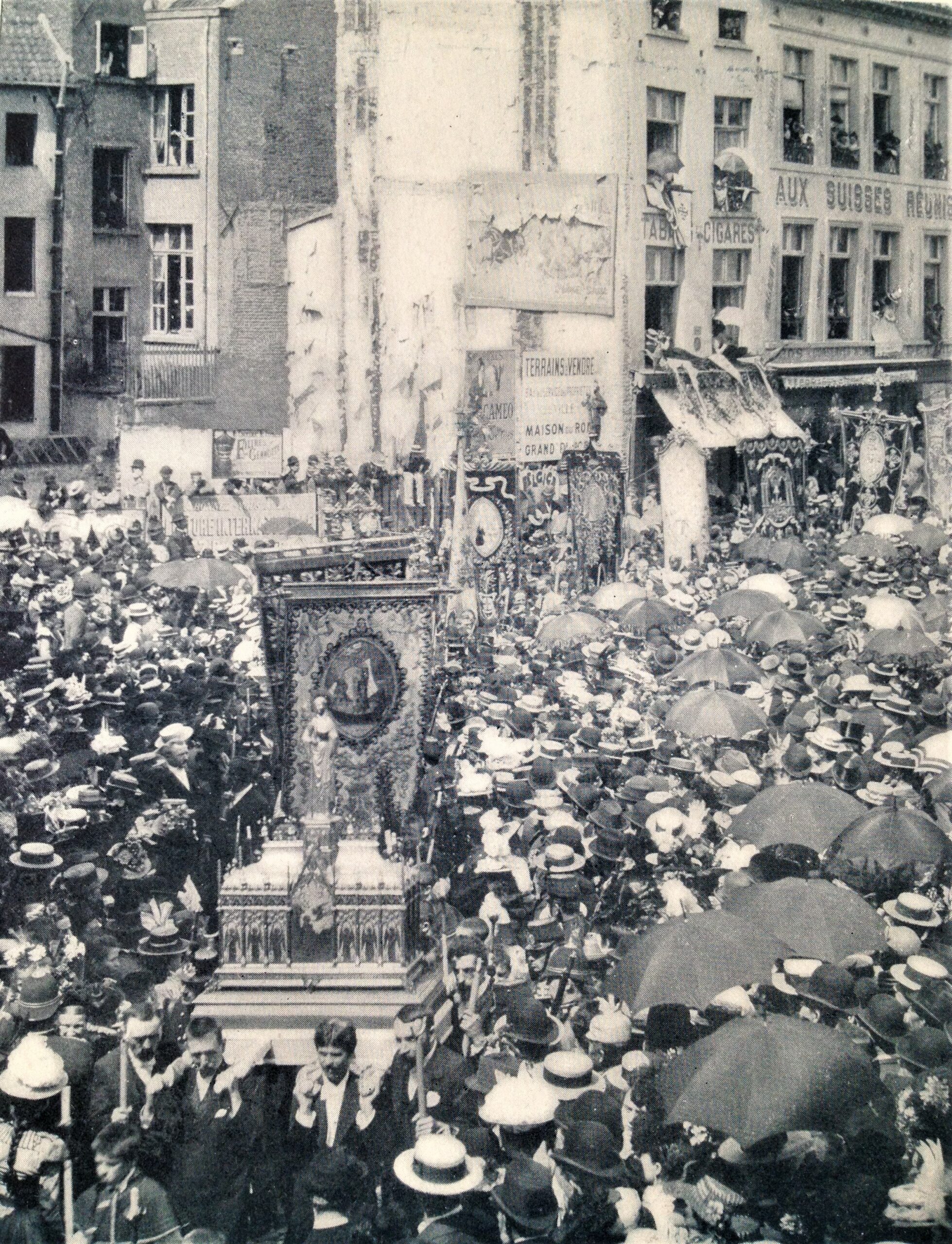Choir stained
thanks to the initiative of the Duke of Arenberg who lived in the palace opposite (the current
Egmont Palace).
The upper gallery illustrates the life of the Virgin Mary, to whom the church is dedicated. In the
register below, angels hold banners in their hands that explain
the scenes above.
The third gallery represents the patron saints of the donors, most of them are the Dukes
of Arenberg and allied families.
The four large side windows of the choir are by painter Louis-Charles
Crespin and master glassmaker Ferdinand-Prosper Colpaert. They date from 1933-1938.
The one at the back on the right is dedicated to the brotherhood of Saint-Hubert. It illustrates a hunting scene with
horn players at the bottom, and the miracle of the appearance
of the cross between the antlers of a deer at the top. Saint Hubert, from the family of Pépin de Herstal and a contemporary
of Charles Martel, did not abandon his passion for hunting even on Good Friday!
The Lord sent him this sign which was responsible for his conversion. A voice urges him to meet the bishop
of Maastricht, Lambert, who ordered him to devote his life to God rather than
to futile pleasures. He became bishop of Tongeren and Maastricht. Saint Hubert is celebrated every year on 3 November
with the 18.00 mass at the Sablon church accompanied by hunting horns.
The coats of arms of many families, members of the brotherhood, appear on the stained glass windows.
On the left, in the background, is the glass roof of the brotherhood of Sainte Wivine. We see the representation
of the hunt of Saint Wivine that can be found in the church in the aisle on the right. There are also
the coats of arms of the member families.
It was one of the most vibrant brotherhoods in the parish until the 1950s,
with the procession filling the entire Place du Grand Sablon.
The two windows at the front of the choir evoke the Equestrian Order of the Holy Sepulchre of
Jerusalem of which it is the chapter church. The one on the right evokes the attempt to create an
Order by Pierre de Carate in Hoogstraten, a small town north of Antwerp, in 1558.
Some 30 knights responded to the call to elect Philip II, grand master of the Order.
But this was refused, given the opposition of the Order of Saint John, known as Malta.
The glass roof on the left shows a knight who was knighted
by Cardinal Van Roey as a member of the Order in the church.



